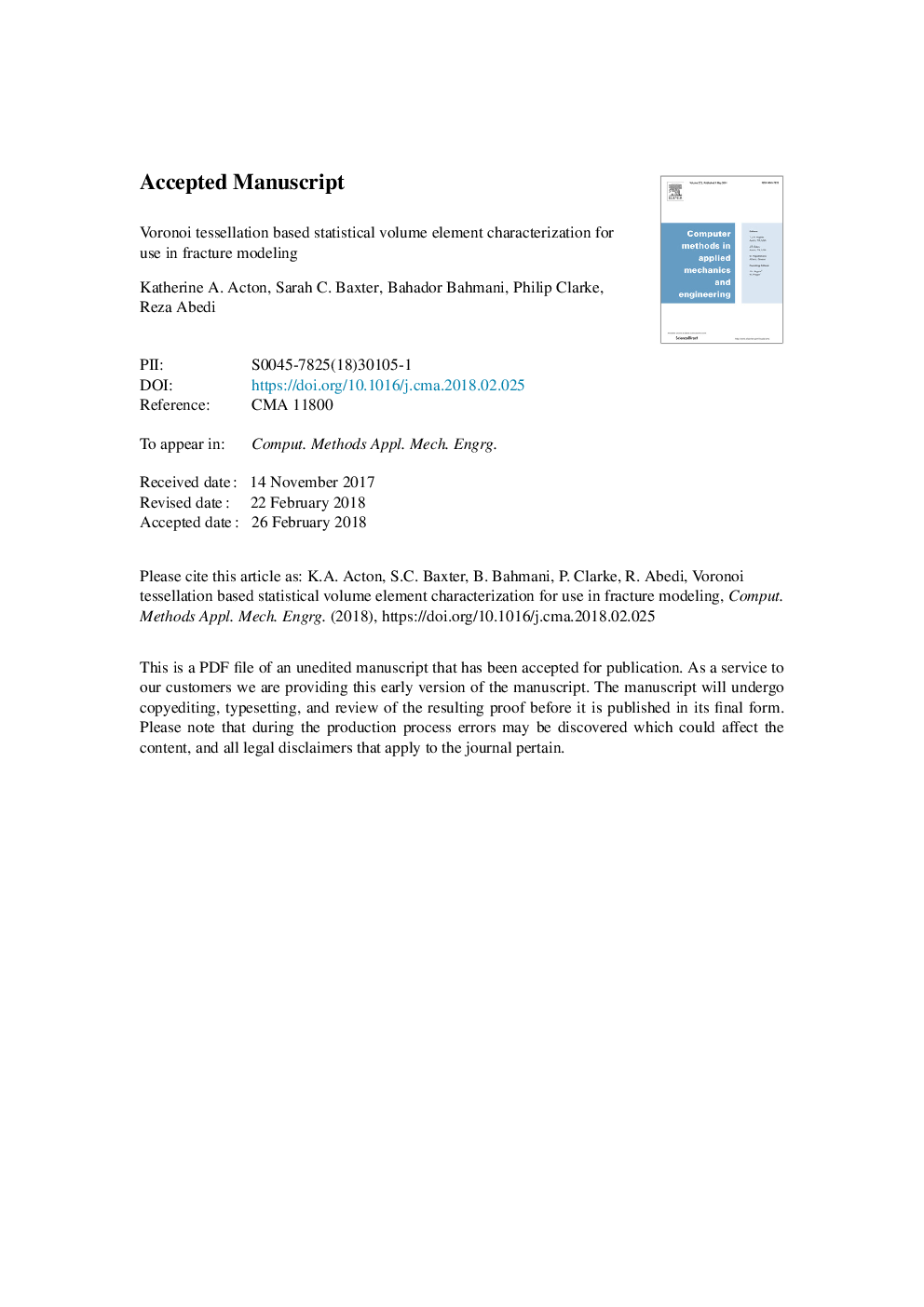| Article ID | Journal | Published Year | Pages | File Type |
|---|---|---|---|---|
| 6915447 | Computer Methods in Applied Mechanics and Engineering | 2018 | 39 Pages |
Abstract
Accurate characterization of random heterogeneity in a material microstructure is essential to the accurate characterization of complex fracture patterns that result from random crack nucleation and propagation. It is also important to characterize microstructural behavior at intermediate scales, between the length scale of material heterogeneity and the scale of a Representative Volume Element (RVE). The availability of material property data at multiple scales will ultimately allow adjustment of computational cost and level of accuracy with respect to resolution of complex fracture patterns. Statistical Volume Elements (SVE) may be generated at the mesoscale by partitioning an RVE. SVE provide a probabilistic characterization of material heterogeneity, while also presenting a continuum representation of apparent properties. Appropriate definition of an SVE requires modeling choices, such as partitioning methods and size. An essential modeling assumption is the choice of loading condition used to approximate SVE apparent behavior, since the constitutive properties of an SVE are not necessarily invariant with respect to the boundary condition applied. This work develops a Voronoi tessellation based partitioning scheme applied at various length scales, for heterogeneous materials with various contrast ratios. Results show the variability of failure strength for a given SVE as a function of loading direction. Results of the mesoscale material property analysis are implemented in an asynchronous spacetime discontinuous Galerkin (aSDG) finite element based fracture model.
Keywords
Related Topics
Physical Sciences and Engineering
Computer Science
Computer Science Applications
Authors
Katherine A. Acton, Sarah C. Baxter, Bahador Bahmani, Philip L. Clarke, Reza Abedi,
